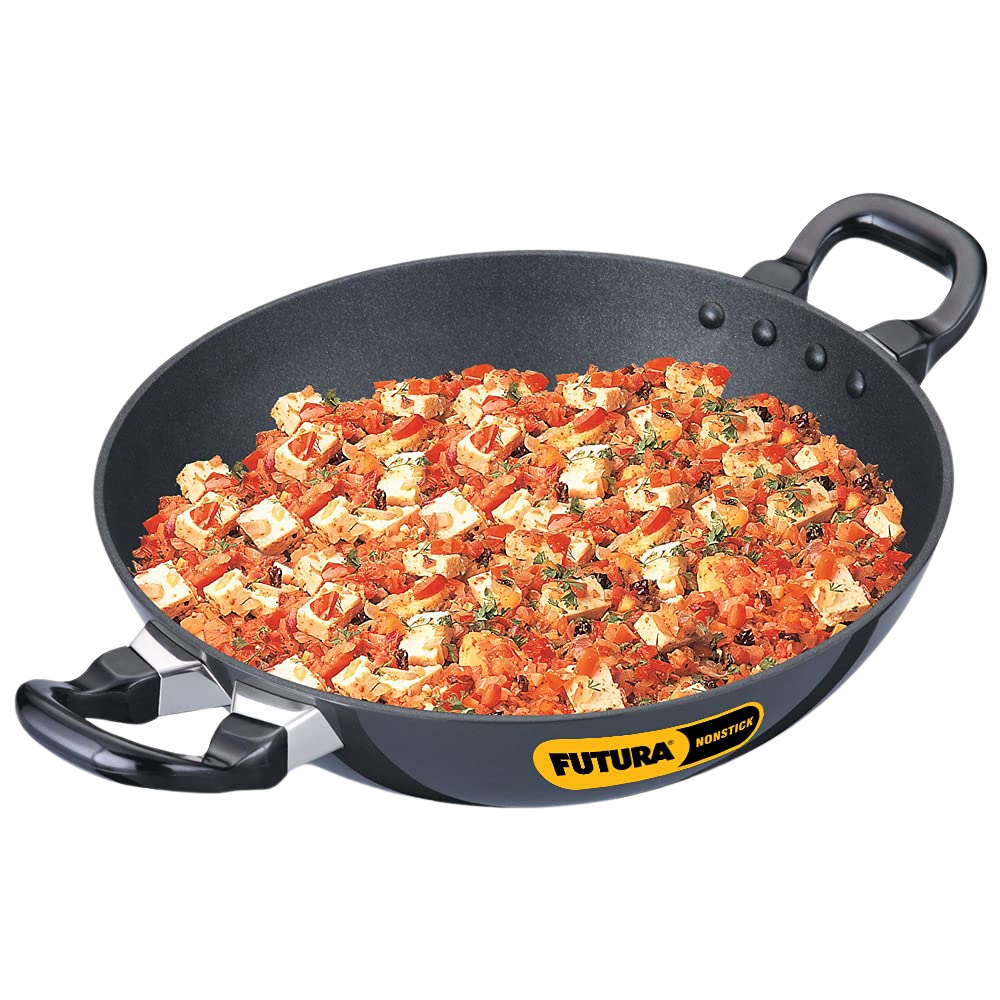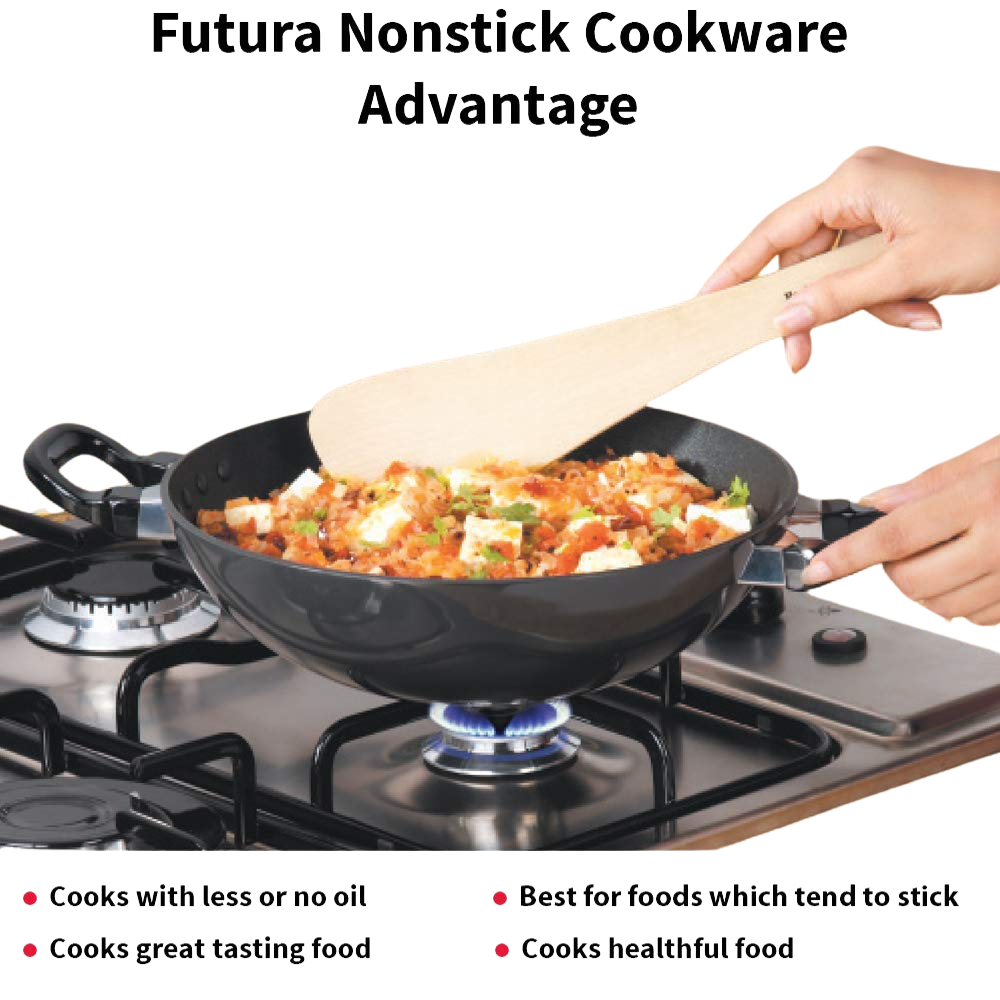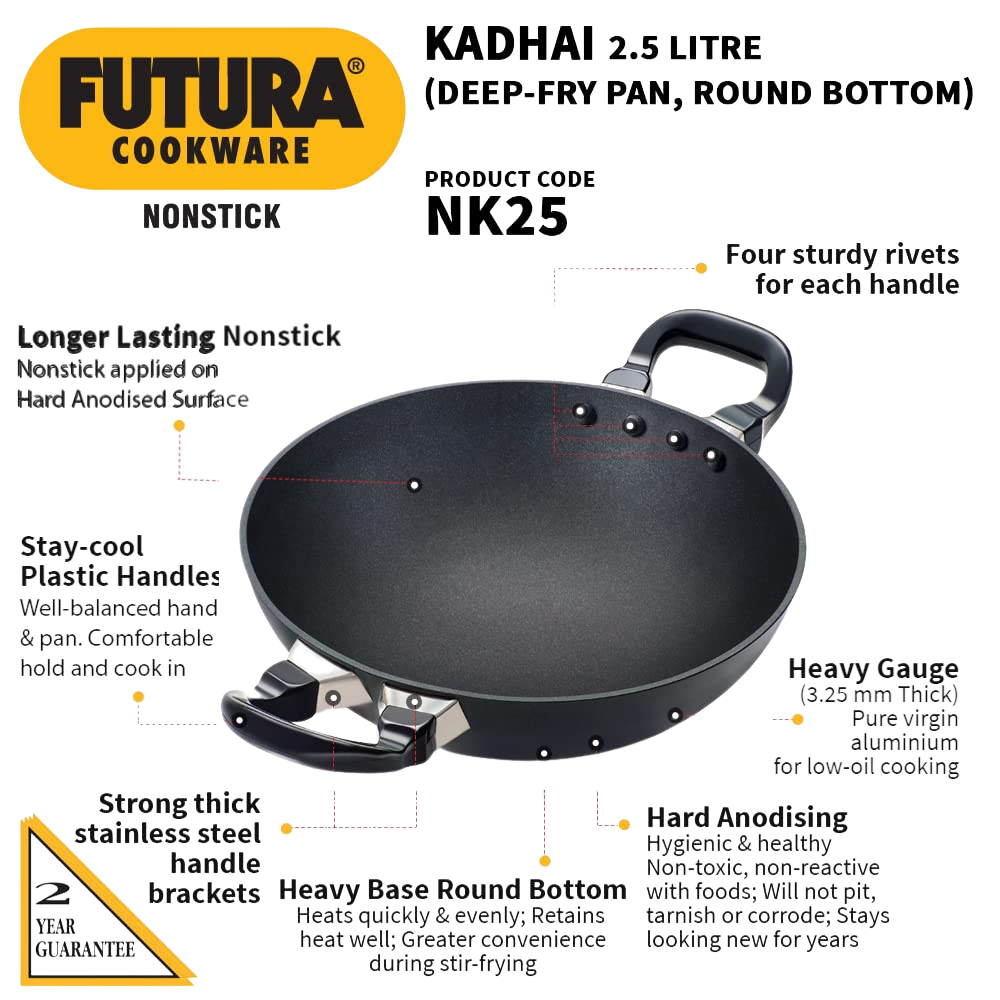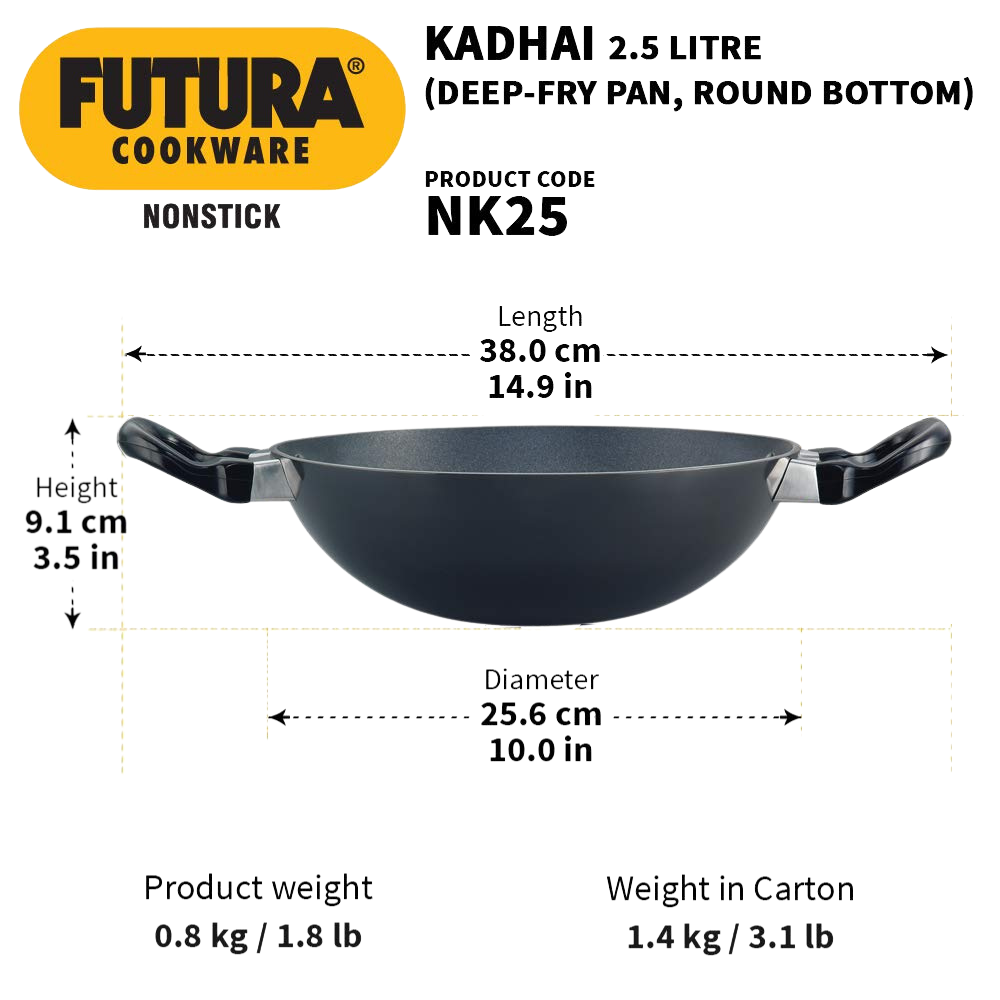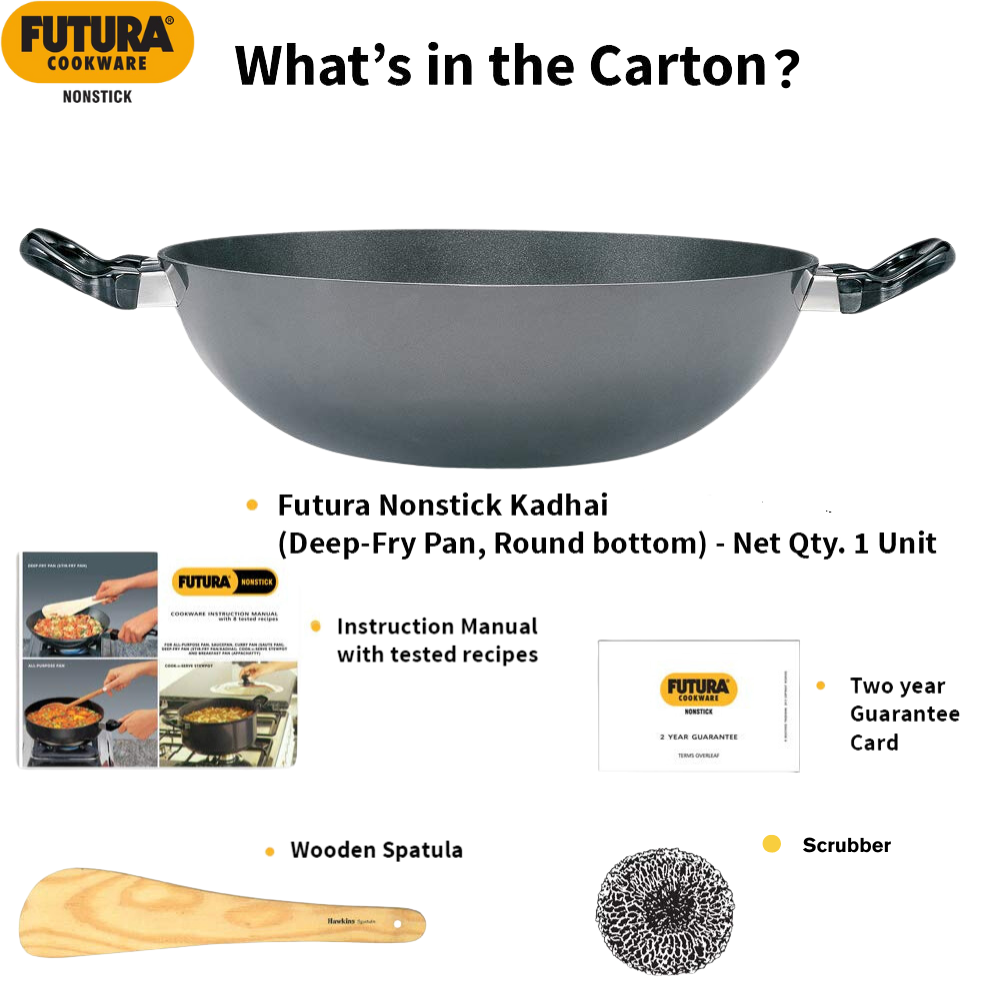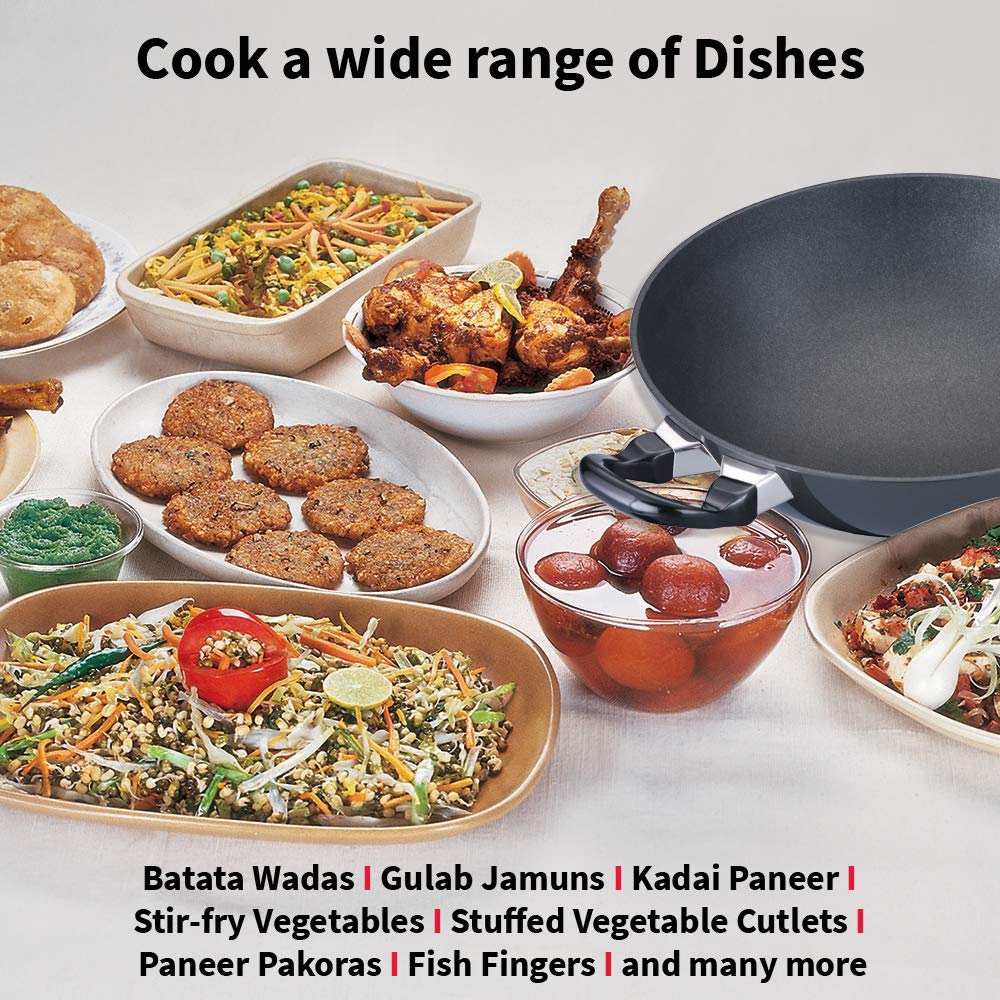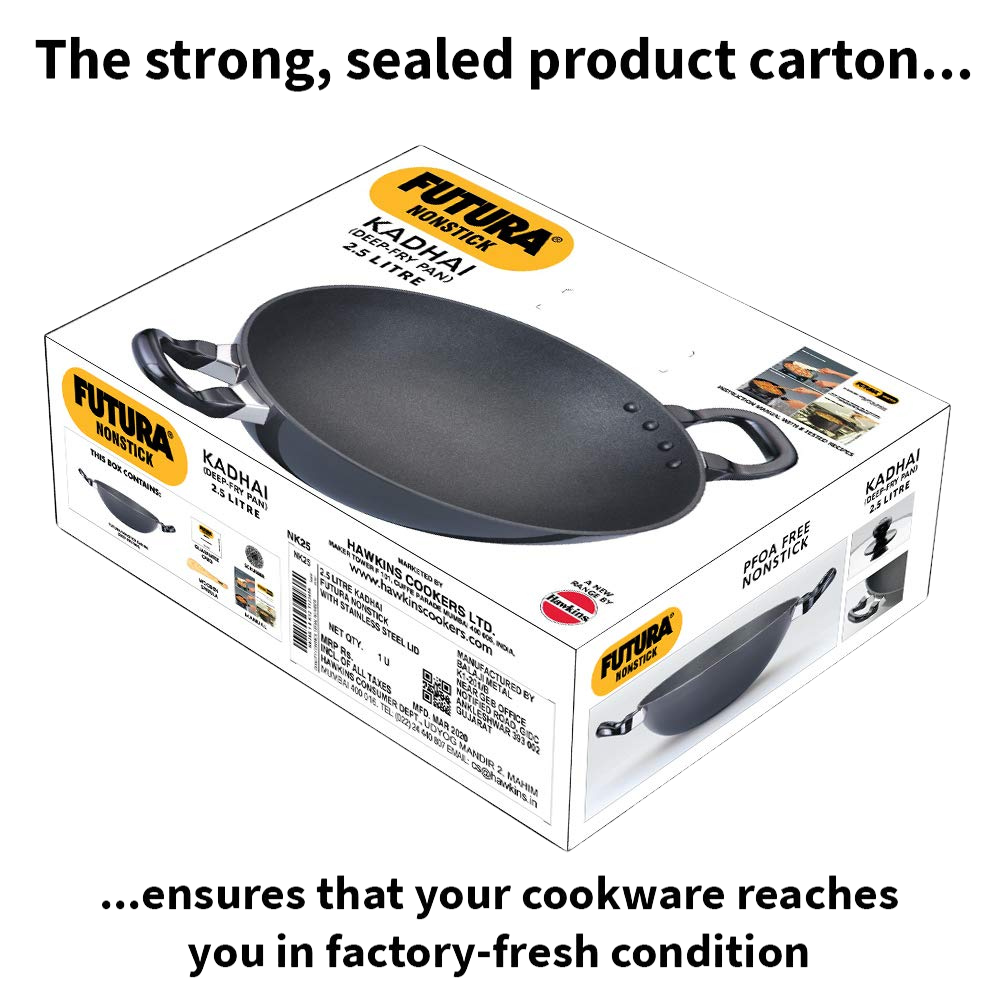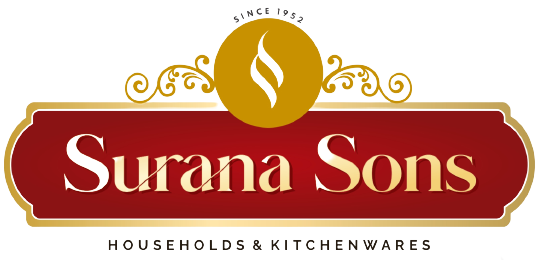Hawkins Futura 2.5 Litre Deep Fry Pan (Nonstick Round Bottom Kadhai Without Lid), Black (NK25)
Hawkins Futura 2.5 Litre Deep Fry Pan (Nonstick Round Bottom Kadhai Without Lid), Black (NK25)

BY HAWKINS
About this item
Deep-Fry Pan (Round Bottom) 2.5 Litre CODE:NK25 (Kadhai) |
Without Lid |
Nonstick
All but one of the Futura Nonstick Deep-Fry Pans have a round bottom and two short handles. The exception is then 2 litre Deep-Fry Pan (Stir-Fry Pan) with a flat bottom and a single long handle. The round bottom pans are also eminently suitable for stir-frying. The Breakfast Pan (Appachatty) with 0.9 litre capacity, round bottom and two rosewood handles, is ideal for the quick cooking of a variety of Indian and Western breakfast dishes.
| Diameter (cm): | 26 |
| Thickness (mm): | 3.25 |
| Carton dimensions (WxDxH): | 355 x 267 x 118 mm |
| Product weight in carton: | 1.39 kg |
| Net Quantity: | 1 U |
|
MANUFACTURED BY - SEE LIST BELOW
1. BALAJI INDUSTRIES PLOT NO. 246, NEAR SHREEJI ICE FACTORY NOTIFIED ROAD, GIDC ANKLESHWAR 393 002 GUJARAT 2. BALAJI METAL PLOT NO. C1/B/217 NEAR G-DALABHAI TRANSPORT, GIDC ESTATE ANKLESHWAR 393 002 GUJARAT 3. UJALA FABRICATORS PVT. LTD. BLDG. NO. 2/75, PANJABI COLONY, KOLIWADA SION, MUMBAI 400 022 MAHARASHTRA 4. VIRAL COOKWARE PLOT NO. W-54(F) ADD. AMBERNATH MIDC AMBERNATH (EAST) DIST. THANE 421 506 MAHARASHTRA 5. VIRAL ENTERPRISE PVT. LTD. PLOT NO. E-59 ADD. AMBERNATH MIDC AMBERNATH (EAST) DIST. THANE 421 506 MAHARASHTRA MARKETED BY HAWKINS COOKERS LIMITED F 101, CUFFE PARADE MUMBAI 400 005, INDIA. |
Made in India
CONSUMERS: ANY QUESTIONS OR COMMENTS? CONTACT: HAWKINS SERVICE DEPARTMENT, UDYOG MANDIR 2, MAHIM, MUMBAI 400 016. TEL: (022) 24 440 807 conserve@hawkinscookers.com www.hawkinscookers.com |
- PFOA Free Non-stick coating locked into tough Hard Anodised Aluminium - lasts longer.
- The Pan is ideal for sautéing and stir-frying foods using minimal quantities of oil. It can also be used for deep-frying and for cooking gravies, curries and sauces.
- It is offered with elegant, comfortable plastic handles which are permanently. riveted to the Pan. The handles are carefully designed to provide greater comfort and safety, particularly when handling heavy loads or hot oil.
- The Pan has a round bottom for greater convenience during stir-frying.
- Suitable for use on domestic gas.
-
Nonstick specifications:
Always use in low flame to keep the product long lasting.
Do not use hard scratchy materials for washing.
Use wooden spoon/spatula only.
Warranty apply only if there is any manufacturing defect.
Warranty ceases if condtions not followed for using.
Read instruction manual to know the complete detail.
Disclaimer:
Despite our attempts to provide you with the most accurate information possible, the actual packaging, ingredients, size, capacity and colour of the product may sometimes vary. Please read the label, directions and warnings carefully before use.
Warranty not applicable on Breakable parts and normal wear & tear. Read Instruction manual before using the products for further details. Contact authorized service center for service. Retain warranty Card to avail the warranty. Contact customer support for service.
Legal Disclaimer: Warranty will be provided by the manufacturer/Importer through nearest Authorised Service Centre.
|
Care & Cleaning |
|
Hard Anodised & Nonstick Cookware: How to Clean |
|
Wash After Every Use |
|
Taking care to protect your hand from the hot pan with sufficient paper napkin or cloth, wipe off residual oil with a paper napkin or muslin cloth from hot pan immediately after cooking. Doing so makes cleaning very much easier |
|
Always wash all surfaces of pan and lid thoroughly after every use in hot water with a mild soap or detergent and a dishcloth or sponge. Do not wash pan in a dishwasher. Let pan cool before immersing in water. For stubborn spots on the nonstick surface, soak pan in hot water (cold water after cooking eggs or milk) for about 10 minutes and rub with a non-abrasive plastic scrubber - never use steel wool, coarse or metallic scouring pads or abrasive detergents. When cleaning the pan ensure that the nonstick coating is not gouged or rubbed against any hard or sharp surface. While cleaning, keep a folded kitchen cloth or a piece of any other soft material such as rubber or sponge underneath the pan to avoid damaging the pan. Dry thoroughly with a soft clean cloth |
|
Stainless steel lid and glass lid may be washed in a dishwasher but this can dull the finish. Wash wooden spatula (included with Nonstick cookware) in hot water with a mild soap or detergent, rinse and dry immediately - do not soak. |
|
Metallic marks - most often from gas stove pan supports - may appear on the hard anodised base. To remove metallic marks from base: apply a kitchen cleanser, such as 'Vim', to the marks and rub with an abrasive kitchen scrubber, such as 'Scotch-Brite' or fine steel wool. |
|
Avoid "Baked-On" Food/Stains: |
|
If pan is not cleaned thoroughly, a thin layer of food or grease may remain. When the pan is heated next, this food/grease becomes "baked-on" and very difficult to remove. "Baked-on" food and the stains from "baked-on" food may be impossible to remove without damaging the pan. |
|
If you get "baked-on" food/stains, you may try the following methods (knowing that the pan surface may get damaged). |
|
For Hard Anodised Cookware |
|
Make a thick paste of a cleaning powder such as 'Vim' and apply it to the "baked-on" food/stain. Wait 5 to 10 minutes. Scour with steel wool using a circular motion. Wash |
|
For Nonstick Cookware |
|
On the Hard Anodised (exterior surface): Make a thick paste of a cleaning powder such as 'Vim' and apply it to the "baked-on" food/stain. Wait 5 to 10 minutes. Scour with steel wool using a circular motion. Wash. |
|
On the Nonstick (interior surface): Make a thick paste of a cleaning powder such as 'Vim' and apply it to the "baked-on" food/stain. Wait 5 to 10 minutes. Scour with a plastic scrubber using a circular motion. |
Futura Hard Anodised Futura Nonstick |
|||||||||||||||
|
|||||||||||||||
|
Share
